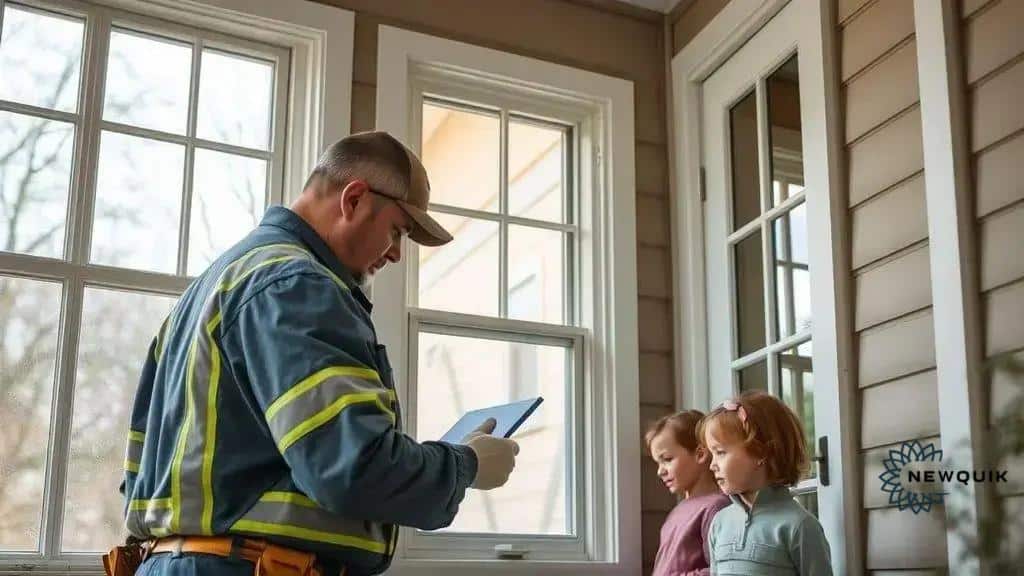Energy assistance program: unlock your benefits today

Anúncios
Energy assistance programs provide crucial financial support to low-income households, helping them afford essential utility costs like electricity and gas while ensuring access to additional services for energy efficiency.
Energy assistance program can be a lifesaver, especially during tough financial times. Are you feeling overwhelmed by your energy bills? This guide will help you uncover the support available to lighten that load.
Anúncios
Understanding energy assistance programs
Understanding energy assistance programs can be crucial for those facing financial difficulties. These programs are designed to help individuals manage their utility bills and ensure their households maintain safe living conditions.
What Are Energy Assistance Programs?
Energy assistance programs are government initiatives aimed at providing financial help to eligible households. They can cover a variety of utilities, including electricity, natural gas, and heating oil. These programs differ by state but generally focus on low-income families.
Who Is Eligible?
Eligibility for energy assistance programs often depends on your income level and household size. Many states have guidelines to help determine who qualifies. Programs frequently prioritize vulnerable groups such as the elderly, disabled individuals, and families with children. It’s important to check your local requirements.
Anúncios
- Income must typically be below a specific level.
- Households with children or elderly members may receive priority.
- Assistance usually comes in the form of grants, not loans, meaning you won’t have to pay it back.
To qualify for assistance, you may need to provide documentation such as income statements, utility bills, and identification. This process ensures that the funds go to those most in need, creating a safety net for households struggling to meet their energy costs.
Another vital aspect of these programs is the application process. You can often apply online, by phone, or in-person at designated offices. It’s essential to gather all required information before applying to streamline the process.
Types of Assistance Available
One common form of assistance is the Low-Income Home Energy Assistance Program (LIHEAP). This program helps with paying energy bills and can even offer weatherization services to improve home energy efficiency. Additionally, states might offer specific programs tailored to local needs.
- LIHEAP provides direct bill payment assistance.
- Weatherization grants help improve energy efficiency in homes.
- Some states offer emergency assistance for unexpected financial hardships.
Each program can provide substantial help, making it easier to manage your energy budget and focus on other essential expenses.
Understanding and accessing energy assistance programs can relieve financial stress and help maintain a safe home environment. By navigating the available resources, you can find the necessary support to keep your home warm and your bills manageable.
Who qualifies for energy assistance?
Who qualifies for energy assistance is an important question for many families facing financial challenges. Understanding the eligibility criteria can help you access vital resources that can keep your energy bills manageable.
Typically, eligibility for energy assistance programs focuses on income, household size, and specific circumstances. Many programs require that your household income falls below a certain percentage of the federal poverty level. This threshold varies by state and the number of people in your household.
Key Factors for Qualification
Several factors determine who qualifies for energy assistance. It’s crucial to consider these:
- Income level: Most programs require that your household income is below a specific amount, often set as a percentage of the federal poverty guidelines.
- Household size: The number of people living in your home can affect eligibility, as larger households may have higher income limits.
- Vulnerability: Households with elderly members, children, or individuals with disabilities may receive priority for assistance.
- Residency: You must usually be a resident of the state where you are applying for assistance.
Understanding these eligibility requirements is the first step in applying for energy assistance. Local agencies can provide detailed information to help you navigate the requirements.
If you think you may qualify, the application process typically involves several steps. You’ll need to gather necessary documentation, such as recent pay stubs, utility bills, and identification. This information helps determine your eligibility and the level of assistance you may receive.
Application Process
The application process is often straightforward but may vary by state. Many energy assistance programs allow applications online, by phone, or in person. Be sure to check the specific details for your state to ensure you have everything ready when you apply. Writing down important dates and deadlines can help you stay on track.
Once you apply, you may have to wait for a determination of your eligibility. Usually, you’ll hear back within a few weeks. If you are approved, you’ll receive information about your benefits and any next steps.
By ensuring you understand who qualifies for energy assistance programs, you can take actionable steps toward securing support for your energy bills, helping to create a more stable living situation.
Types of energy assistance offered

When exploring the various types of energy assistance offered, it’s essential to understand the diverse options available for those in need. Different programs are tailored to help families manage their energy costs effectively. These programs can provide both short-term and long-term support to ensure households remain safe and comfortable.
Direct Payment Assistance
One of the most common forms of assistance is direct payment help for utility bills. Many energy assistance programs focus on giving financial support to pay for electricity, gas, and heating costs. LIHEAP, or the Low-Income Home Energy Assistance Program, is a primary example of such aid offered by many states.
- Helps cover current utility bills.
- Available in many states with different income thresholds.
- Typically does not require repayment.
In addition to LIHEAP, various local agencies might offer similar direct assistance programs to help families in crisis. Ensuring you check these options can maximize the support you receive.
Weatherization Services
Besides direct payments, many assistance programs also provide weatherization services. These services aim to improve a home’s energy efficiency by making necessary repairs and upgrades. This can include sealing windows, adding insulation, and repairing heating systems. By improving energy efficiency, households can significantly lower their energy bills.
- Focuses on reducing energy consumption.
- Can lead to long-term savings on utility costs.
- Often available for low-income households through programs like the Weatherization Assistance Program (WAP).
Weatherization benefits not only help in immediate savings but also create a more comfortable living environment year-round.
Emergency Assistance
In times of crisis, emergency assistance programs step in to provide rapid support. These programs may offer funds to help households facing immediate energy shutoff or those needing urgent repairs to heating systems during winter months. States usually have protocols in place for qualifying cases.
- Designed for urgent situations where energy is at risk of being cut off.
- Quick access to funds is prioritized for eligible households.
- May include repairs or replacement of essential heating equipment.
Being aware of these types of energy assistance offers valuable options to those struggling to keep up with their energy expenses. Applying to programs that meet your specific needs can help alleviate financial stress and ensure access to the energy needed for daily living.
How to apply for energy assistance programs
Applying for energy assistance programs can seem daunting, but understanding the steps involved can make the process much smoother. Knowing how to apply can help you secure the support you need to manage your energy bills effectively.
The application process usually involves several key steps. First, it’s essential to determine which program you’re eligible for based on your income and household size. Most states have specific guidelines, and checking these is an excellent starting point.
Gather Required Documentation
Before you start the application, collect all necessary documents. Commonly required items include:
- Proof of income: This may include pay stubs, tax returns, or benefits statements.
- Utility bills: Have your most recent energy bills handy.
- Identification: A government-issued ID can help verify your identity.
- Household information: Be ready to provide details about all members living in your home.
Having these documents ready can streamline your application process, allowing you to fill out forms accurately and quickly.
Choose Your Application Method
Next, decide how you want to apply. Many programs offer multiple options for submitting your application:
- Online: Many states have online portals where you can complete and submit your application.
- By phone: You may call your local energy assistance office to apply verbally.
- In person: Visiting a local office can help if you prefer face-to-face interactions or need assistance with the application.
Each method may have specific instructions and requirements, so it’s important to follow them closely.
Awaiting Approval
After submitting your application, you’ll need to wait for approval. Typically, you should receive a response within a few weeks. It’s essential to keep an eye out for any communication regarding your application status. If you’re approved, you will receive details about your benefits and any next steps to ensure you receive assistance.
If your application is denied, don’t lose hope. Many programs have an appeal process, and understanding why your application was rejected can help you submit a more successful appeal or a new application in the future.
Tips to maximize your energy assistance benefits
Maximizing your energy assistance benefits can make a significant difference in your household budget. Knowing how to effectively use these resources ensures you get the most support available.
One of the first steps is to understand exactly what your energy assistance program covers. Each program may have different rules and types of benefits, so it’s essential to read all program guidelines.
Stay Informed About Your Benefits
Make sure you fully understand your benefits, including:
- Which bills are covered: Some programs only assist with electricity or gas, while others may help with heating oil or wood.
- How much assistance you can receive: Knowing the maximum benefit can help you budget for the rest of your expenses.
- Reapplication processes: Be aware of renewal deadlines so you don’t lose your benefits.
It’s essential to keep all your documentation organized, as you may need to provide it again when reapplying.
Make Use of All Available Resources
Utilized resources aren’t just limited to financial assistance. Programs may also offer additional services. For example:
- Energy efficiency programs: Take advantage of free weatherization services to improve your home’s efficiency.
- Payment plans: Some utility companies offer flexible payment plans that can align with your assistance benefits.
- Community resources: Look for local nonprofit organizations that offer additional support.
Leveraging these available resources can help lower your overall expenses and improve your financial situation.
Communicate with Your Utility Provider
Building a relationship with your utility provider can beneficially impact your benefits. Open communication is key. Notify them about your participation in an assistance program, and ask if they offer any additional discounts or programs for low-income customers.
Utility companies often have programs designed to assist you further, especially during crisis situations. If you have trouble making payments, reach out as early as possible to discuss options.
Staying proactive about your energy assistance benefits allows for better management of your energy costs, leading to a more secure financial future.
In summary, understanding and effectively utilizing energy assistance programs can significantly relieve financial stress for many households. By knowing how to apply, what types of support are available, and how to maximize benefits, you can take control of your energy expenses. Don’t hesitate to reach out to local agencies and utility providers for extra help. Remember, you are not alone in this journey. There are resources and support systems available to ensure you keep your home comfortable and your energy bills manageable.
\n\n
\n
FAQ – Frequently Asked Questions about Energy Assistance Programs
What is an energy assistance program?
An energy assistance program provides financial support to low-income households to help them pay for essential utilities like electricity, gas, and heating.
How do I apply for energy assistance?
You can apply online, by phone, or in person at your local energy assistance office. Make sure to gather all required documents beforehand.
Who is eligible for energy assistance?
Eligibility typically depends on your income level, household size, and specific circumstances, with priority given to vulnerable populations like the elderly and disabled.
How can I maximize my energy assistance benefits?
To maximize your benefits, stay informed about what is covered, communicate with your utility provider, and make use of all available resources, including energy-efficient programs.





